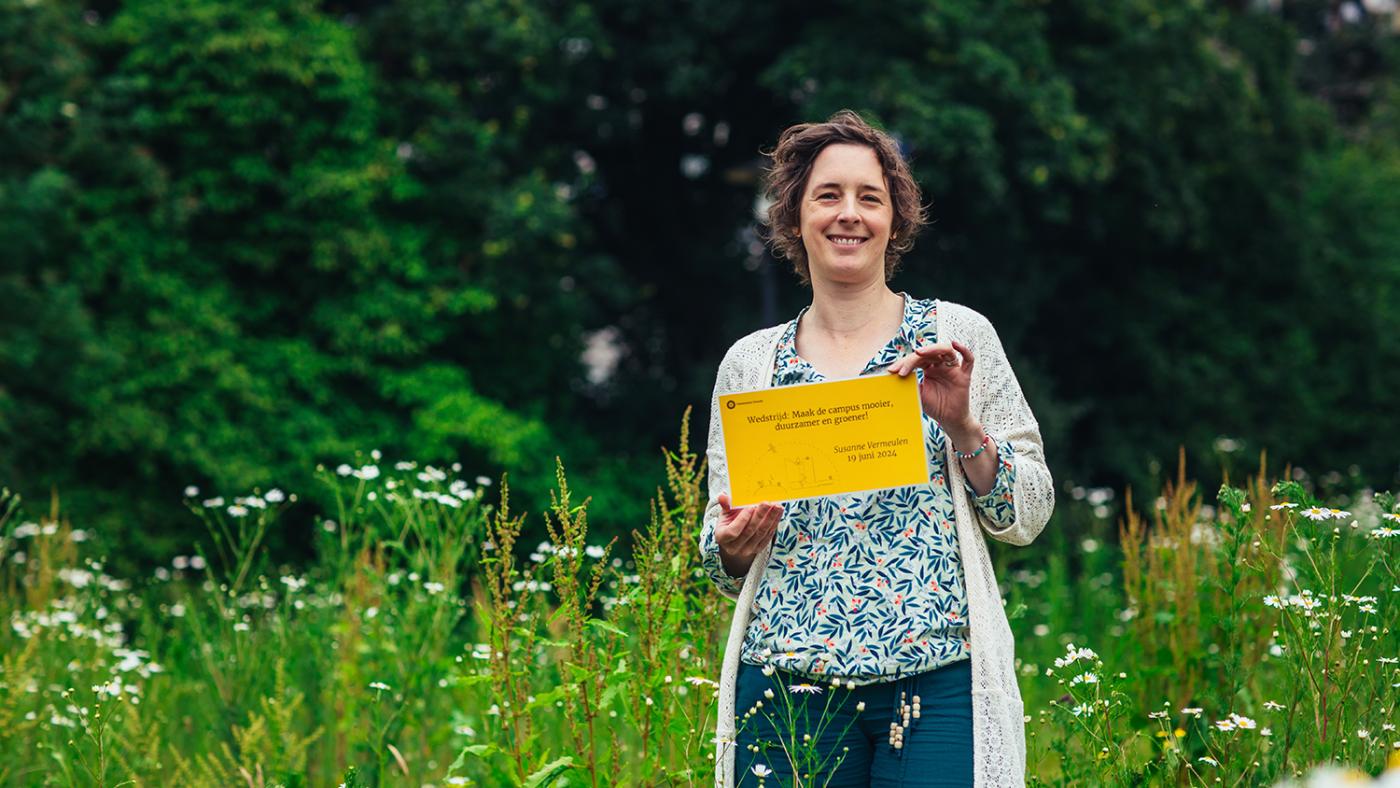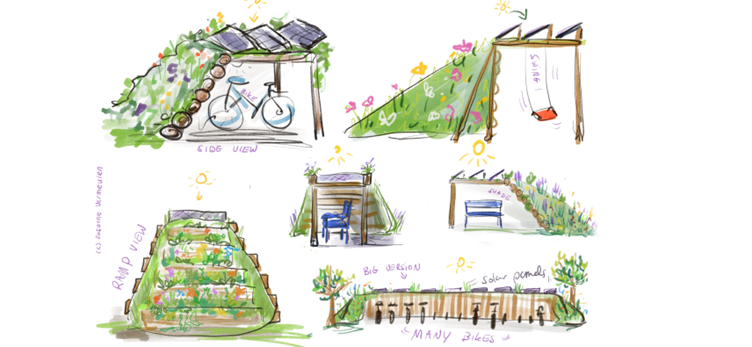Sustainable public competition
Multifunctional flower hill by Susanne Vermeulen is the winner

The multifunctional flower hill, made of wooden steps, is a slope and a canopy in one. For example, a bicycle rack or bench can be placed under the canopy. Solar panels will be installed on the roof and the slope will be planted with flowers or plants, edible and non-edible, which makes it “colourful and also a bit playful,” says Susanne Vermeulen, Management Assistant at the Faculty of Geosciences, about her design.
And her idea might just be put into practice. As the winner of the sustainable public competition, she will receive 500 euros. The university also intends to implement her design at Utrecht Science Park (USP), using a budget of up to 75,000 euros. The departments of Maintenance & Management and Area Development will investigate whether the project can be realised, as well as identify suitable locations.

Multifunctional flower hill design
Contest
From March to May, everyone was welcome to participate in the competition and submit innovative ideas to make the campus greener and more sustainable. The participants had to come up with a project that would generate solar energy and increase biodiversity on campus. A total of eighteen entries were submitted.
UU aims to be CO2-neutral by 2030. To achieve this goal, the university is installing solar panels on its buildings and setting up a solar power plant in Bunnik. UU needs space to generate sustainable energy, which sometimes conflicts with its ambition to have a greener campus by 2035 by strengthening and restoring local biodiversity.
Bioblitz is an example of the university's initiatives to increase biodiversity. The project is going to list and monitor animals, plants and mushrooms living at Utrecht Science Park. Until June 21, those living and using the campus can send photos of the species they encounter on campus.
Original
Vermeulen's multifunctional flower garden is a solution for the conflicting goals. The jury selected the idea for its originality and feasibility. According to Wilfried van Sark, Professor of Solar Energy Integration and chair of the jury, Vermeulen's design shows “that solar energy and biodiversity can go together, provided you take all aspects into account in your design”.
Two entries narrowly missed out on the main prize. Emma Ravenswaaij, from the Faculty of Science, came up with the Green Sunflower, a column with solar panels and gardens, permeated by insect hotels. Remy Visscher, a gardener at the Botanical Gardens, and Lieke Verhoeven designed a project called Ecoplant, which consists of pillars with solar panels and plants, which would be planted in a so-called wadi - a green ditch to store rainwater. This would make plants less sensitive to destruction. The jury considers it a good idea, but a similar project is already going on on campus.